
Nowadays LED lights are becoming more and more popular. Due to the energy saving and long life of LED light bulbs, replacing non-LED bulbs to LED bulbs can help a typical American family save about $1,000 in 10 years and save $8.33 per month.
Maybe you also want to choose the most suitable LED for your family, but there are too many light bulbs in the market. Do you know to choose? You should first understand the basics of the LED bulb and the area in which it is used, then select the appropriate light bulb type and style as needed.
The following ENUOTEK authors will bring you 15 brainless tips to quickly choose the light bulbs you need.
Since each type of lamp head is different in size, you must first know the required lamp head size when purchasing. It is recommended to bring the previous lamp at the time of purchase, which will prevent the size of the lamp head from being inconsistent after purchase.
The first bulb type is the E type. The E type refers to the combination of the lamp cap and the bulb is spiral. The number indicates the inner diameter of the spiral shell, the most common is the E27 bulb.The common specifications are as follows:
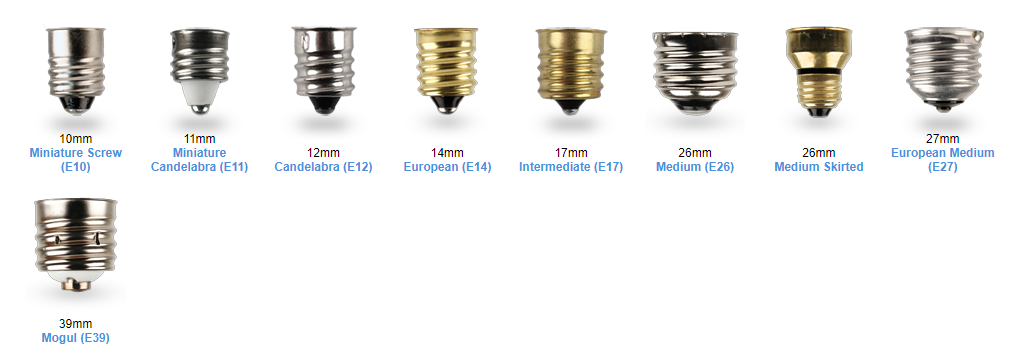
(Figure from: https://www.bulbs.com)
The second type is the G type. The G type refers to the combination of the lamp cap and the bulb is plug-in. The number indicates the center distance of the two pins of the bulb. The common specifications are as follows:
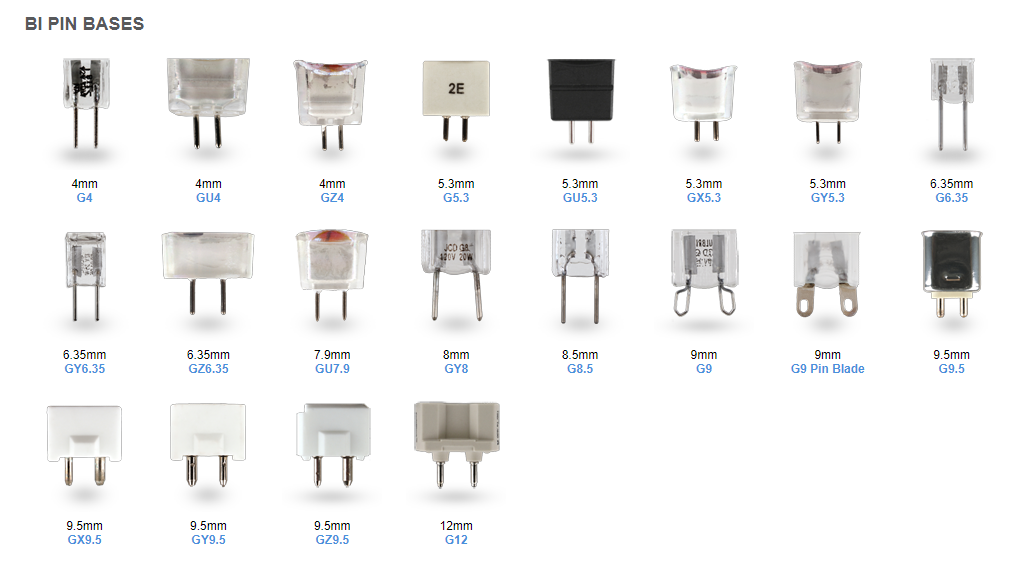
(Figure from: https://www.bulbs.com)
The third type is GU type, G indicates that the lamp type is plug-in type, U indicates that the lamp head portion is U-shaped, and the number indicates the center distance of the lamp foot hole (unit: mm), the most common is the GU10 bulb.The common specifications are as follows:
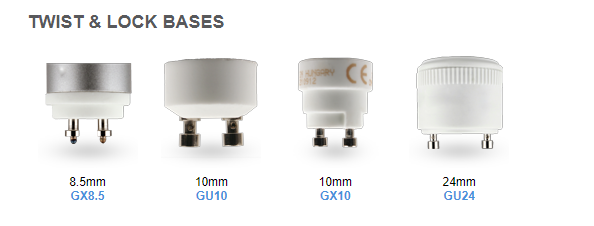
(Figure from: https://www.bulbs.com)
The fourth type is B type. The B type refers to the combination of the lamp cap and the bulb as the bayonet type. The number indicates the inner diameter of the spiral bayonet. The common specifications are as follows:

(Figure from: https://www.bulbs.com)
You can use the light bulb in many places to decorate and illuminate your living area.
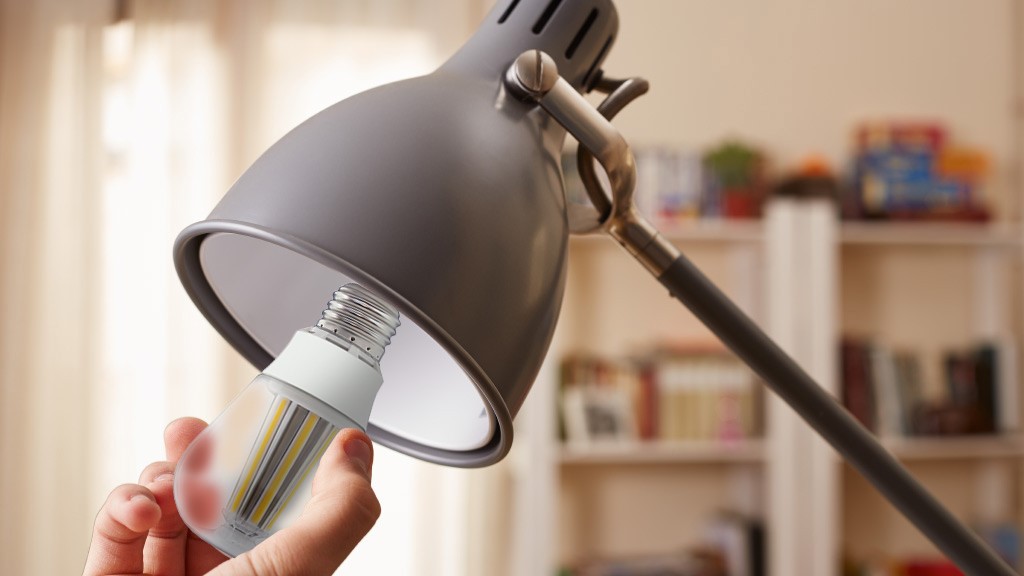
(In the table lamp, such as E27 LED light bulb in the table lamp)
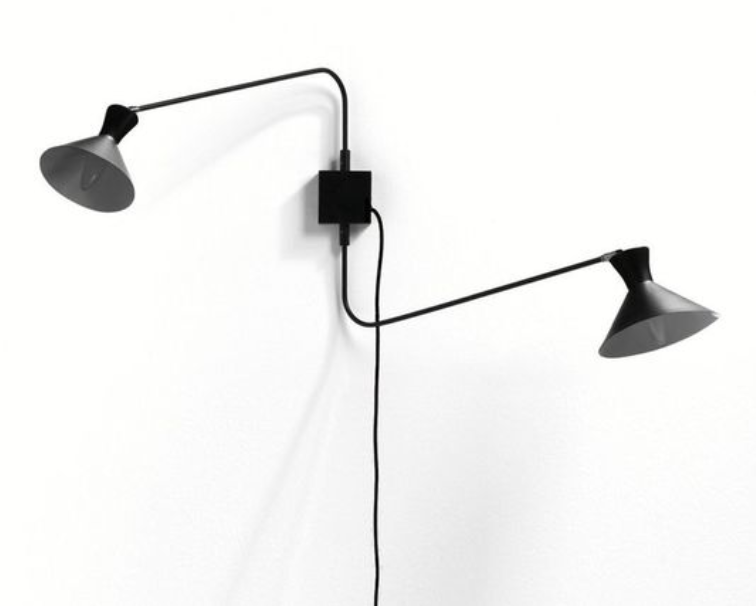
(In the wall light fixture,such as E14 LED candle light bulb in the wall light)
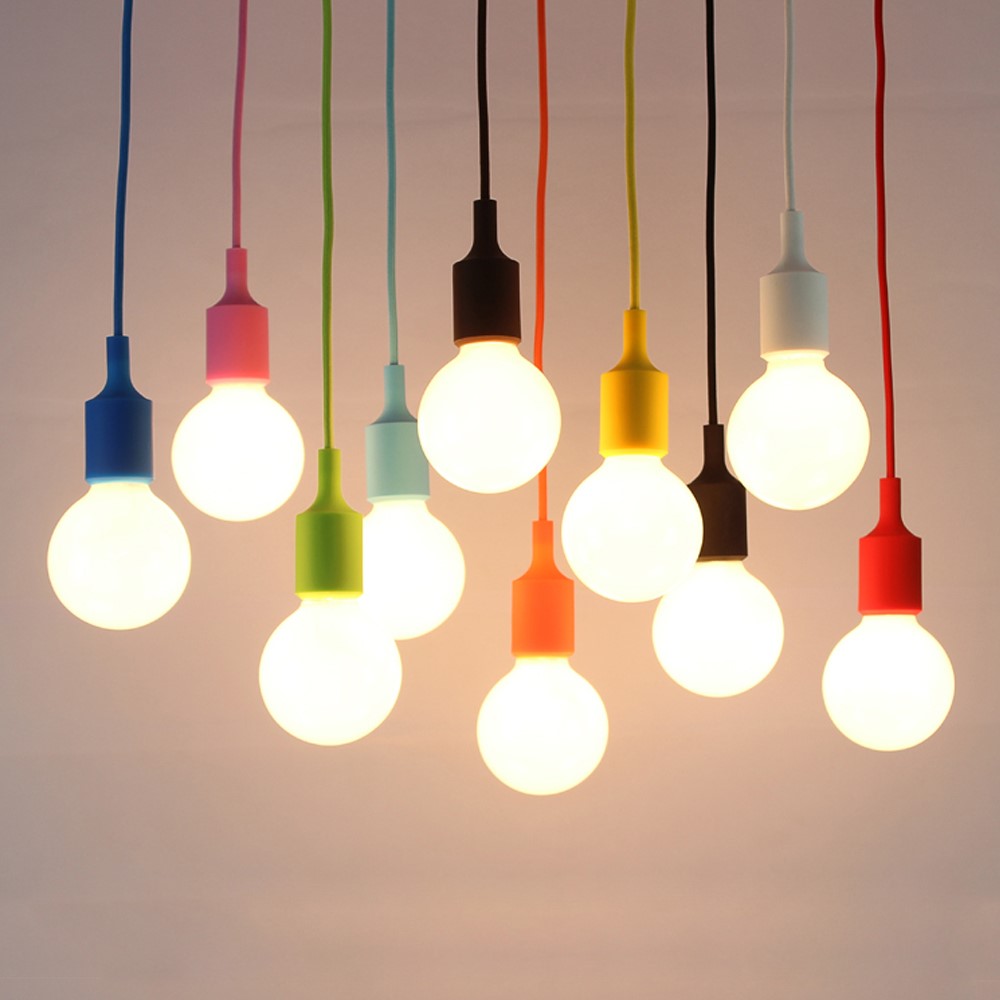
(In the hanging lamp,such as E27 LED globe light bulb in the hanging lamp)
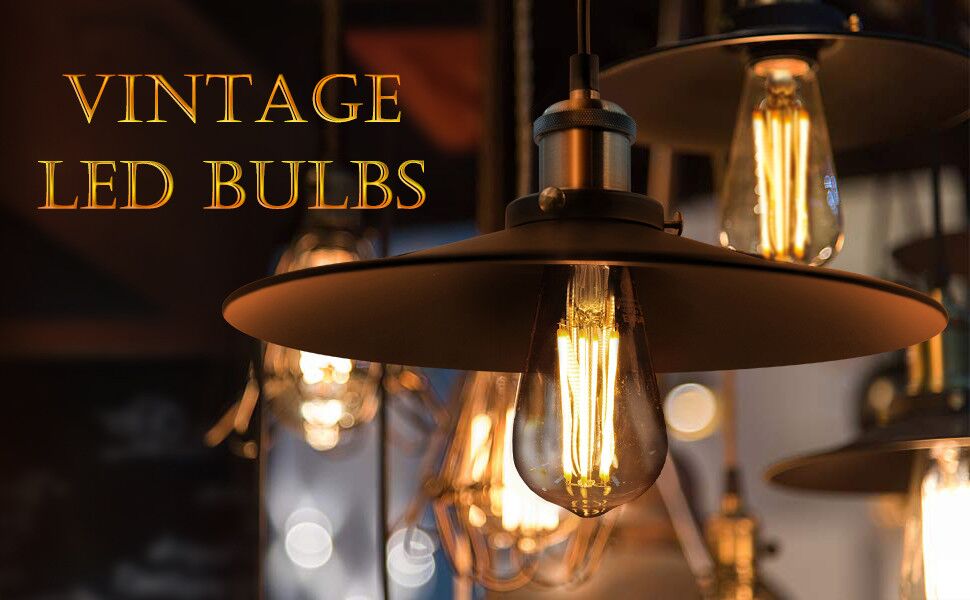
(In the ceiling light fixture,such as ST64 LED light bulb inthe ceiling light fixture)
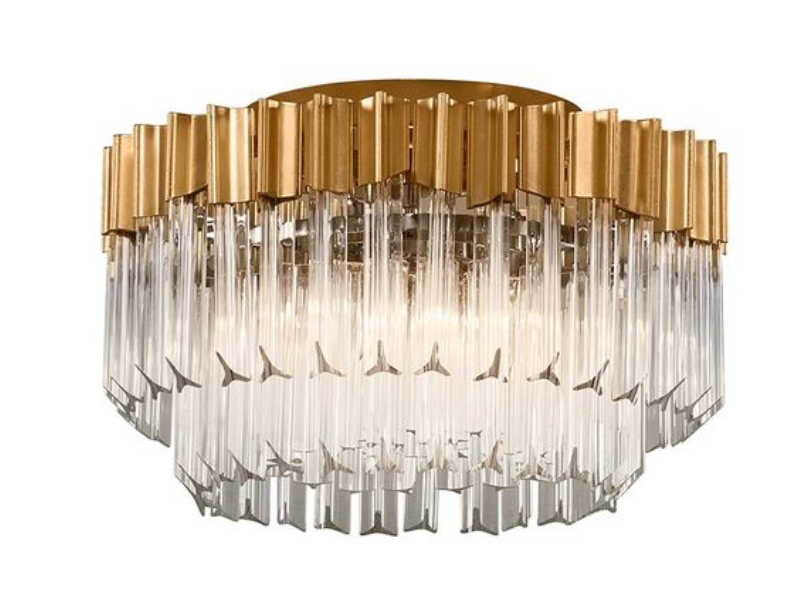
(In the chandelier,such as G9 LED light bulb inthe chandelier lamp)
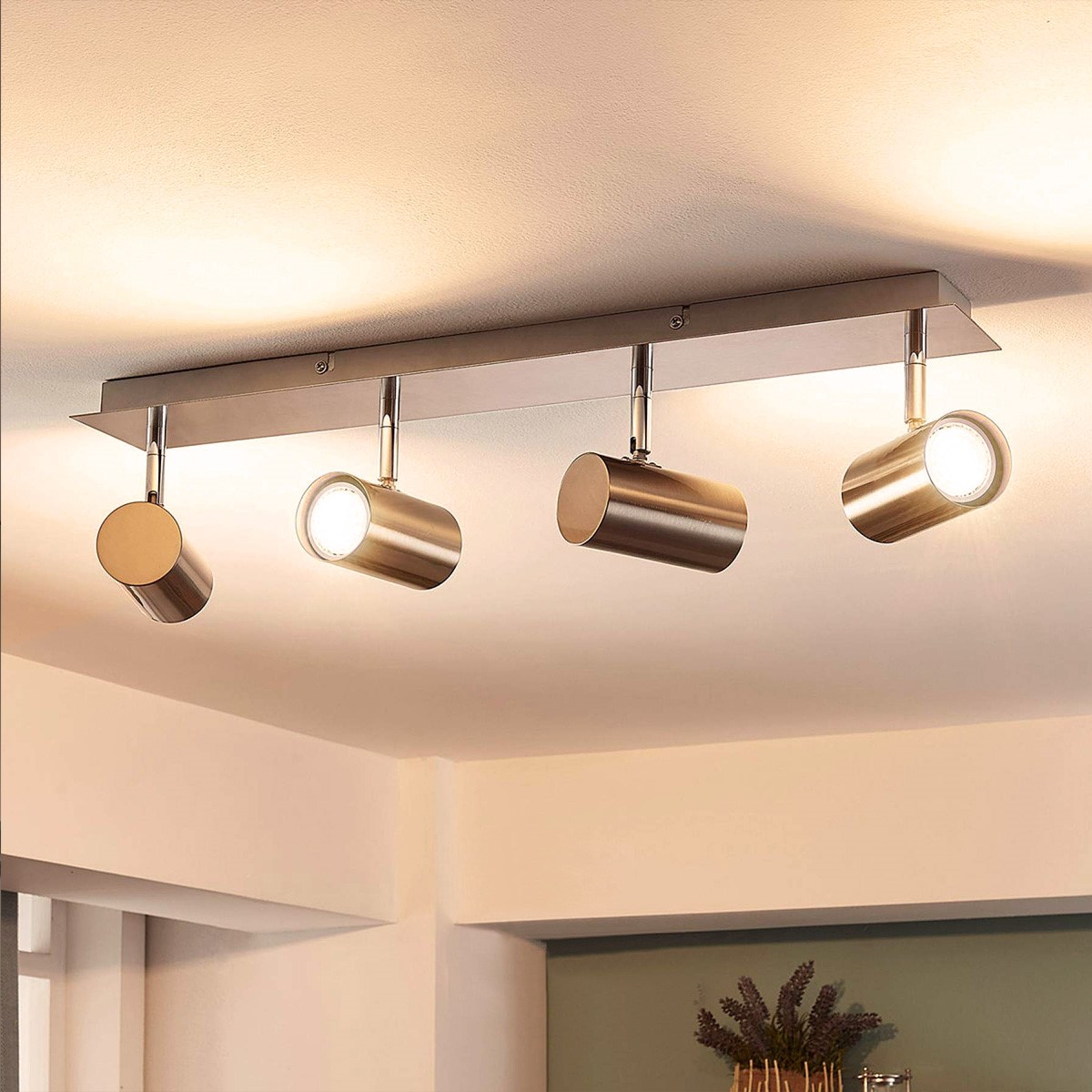
(In the track light, such as GU10 LED light bulb in the track light)
The international voltage is different. Please pay attention to the input voltage indicated on the lamp before purchase, otherwise, it will be easy to burn out.
Currently, two types of AC voltages are used in indoor power supplies in various countries, AC 100V-130V and AC 220-240V.
The voltages of 100V and 110-130V are commonly used in the United States,Japan,Hawaii,Canada and Mexico.
The voltage of 220-240V is commonly used in China, the United Kingdom, Korea Southeast, Australia, New Zealand and most Asia countries and most European countries.
In countries with 220-230V voltages, 110-130V voltages are also used, such as Sweden,Russia,Spain,France and Malaysia.
If the purchased bulb is marked with AC85-100V or AC220V-240V, it will need to be used in the corresponding country.
If the light bulb is marked with AC85~265V or AC100~265V, just pay attention to whether the lamp connector is matched.
The common lamp types are as follows:
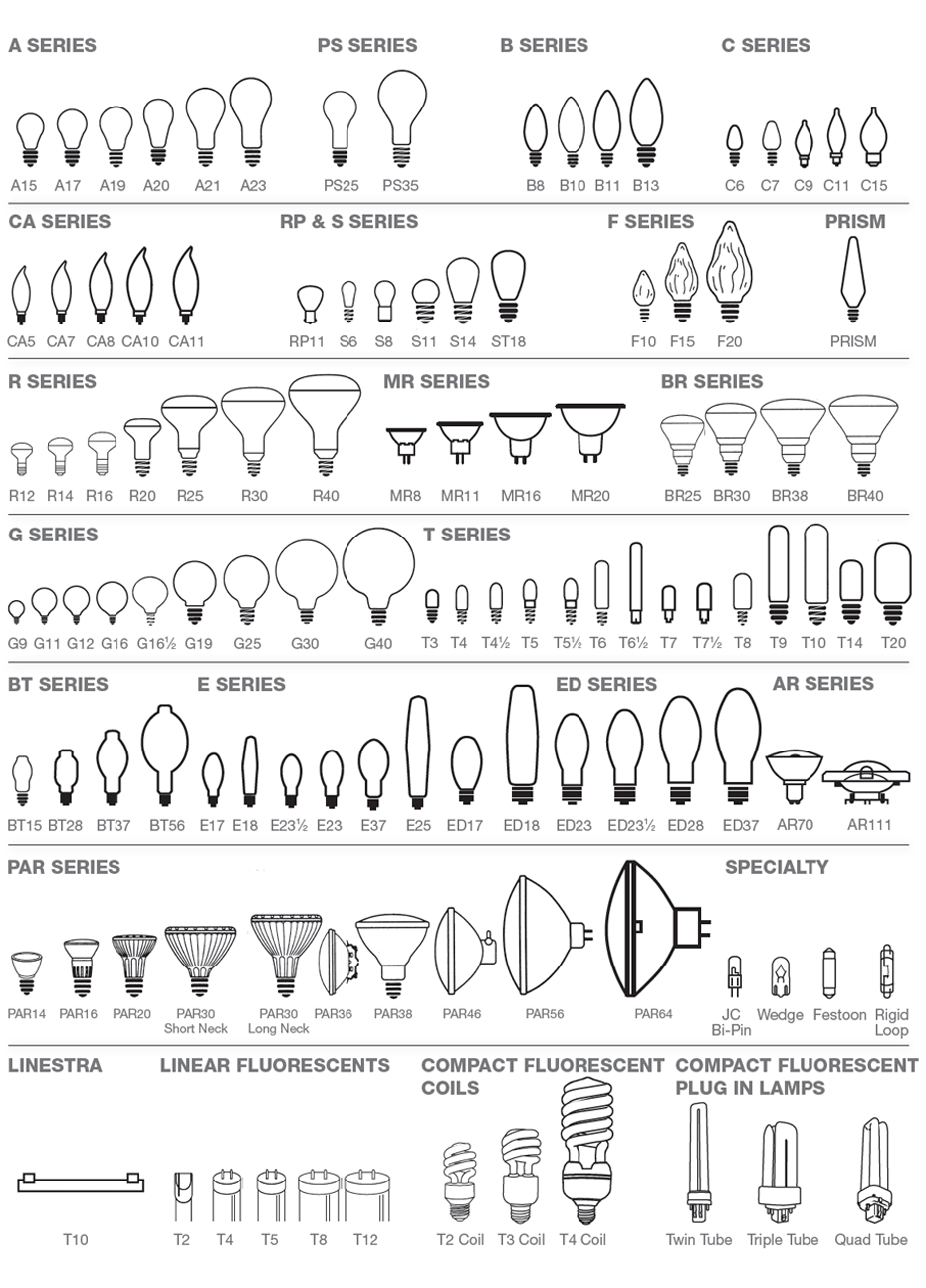
(Figure from: https://www.bulbs.com/)
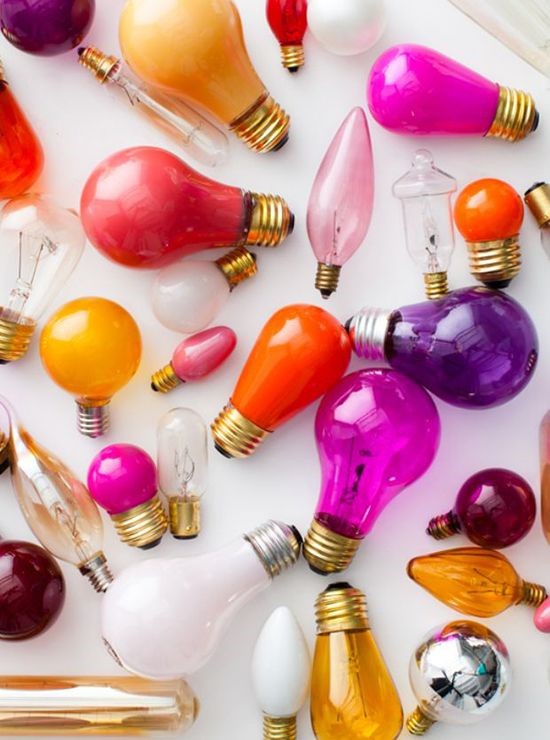
The color of the bulb shell is roughly divided into three categories:
The first one is a transparent outer casing, which is biased towards retro style and artistic.
The second is a white shell, simple and atmospheric, belonging to the modern typical style.
The third is a color shell, and different colors can be used for different applications. The colored light of a colored LED bulb is best suited for decorative lighting.
The blue LED bulb is especially suitable for swimming pools and water features to attract attention. The blue light gives a fresh, cool feeling.
The green LED bulb is especially suitable for beautifying the environment, immersing people in the vitality of nature and helping to highlight shrubs and other plants.
The red LED bulb is especially suitable for the holiday season. Add red light to your Christmas tree and add love to your Valentine's Day.
The yellow LED bulb is especially suitable for restaurants and gardens. It is a pleasant, fun color that gives you energy.
The orange LED bulb is especially suitable for Halloween.
The amber LED bulb is especially suitable for creating a warm party atmosphere with soft lighting.
The modern style is minimalist, the lighting is brighter and the outer shell is white.
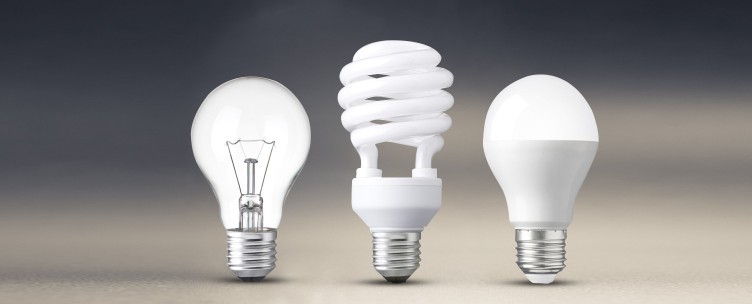
Antique LED filament bulbs can be used to add a feeling of vintage to your home or business.
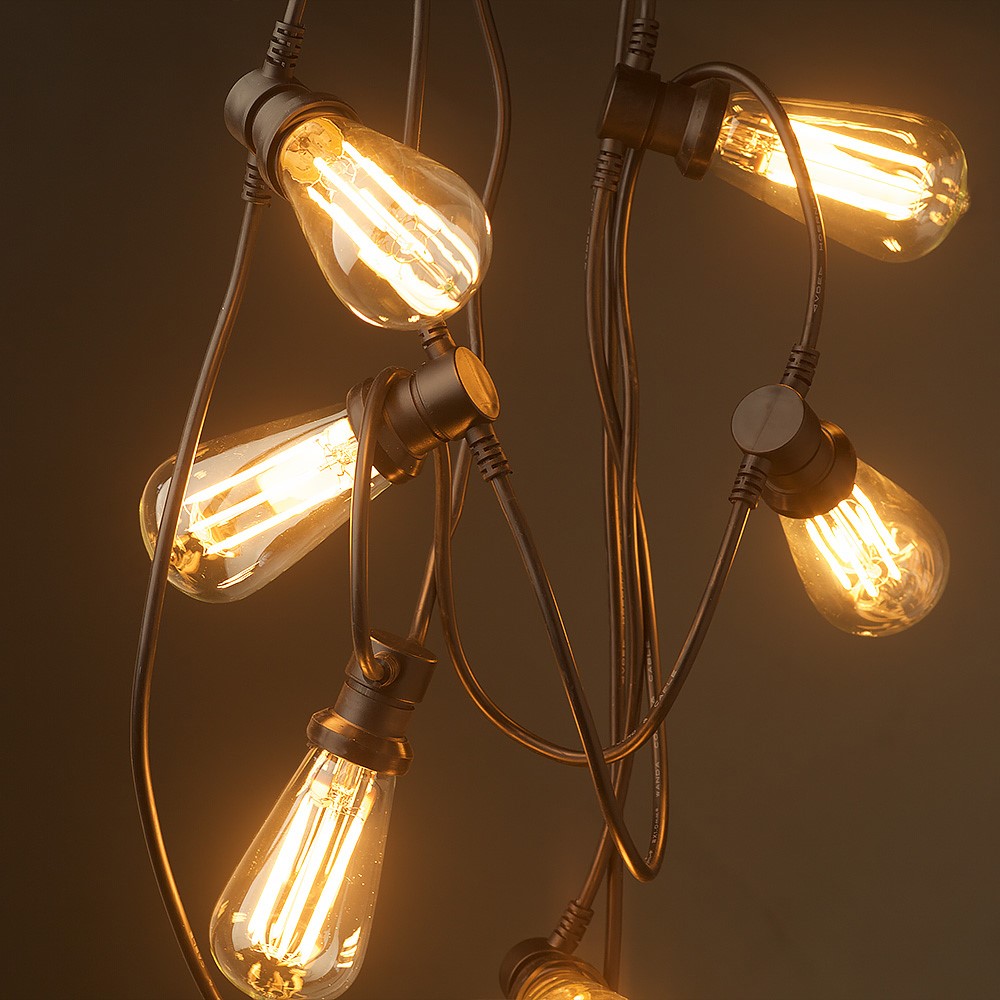
These LED filaments match the look of an old-fashioned incandescent bulb, producing the same warm light and being more energy efficient. These retro bulbs feature a clear glass case that shows the internal filaments. Since these bulbs have lower lumen output than typical LED bulbs, they are generally used for decoration.
LED filament bulbs to have a variety of shapes and have different characteristics and use.
The Edison bulb is the most popular shape and is a replica of Thomas Edison's first bulb. They are usually medium (E26 / E27) pedestals and are ideal for many decorative luminaires, including chandeliers and wall lamps.
Victorian bulbs have a standard A-light shape that can be used for chandeliers and wall lamps.
The retro chandelier bulb is a small cone-shaped bulb that can be used for wall lights, chandeliers, and small decorative lights. They are usually medium (E26 / E27) and candlestick (E12 / E14) based.
Antique spherical bulbs have medium and candlestick bases of different diameters, depending on the number behind the "G" in the name. They are ideal for open luminaires and chandeliers.
The vintage silver bowl bulb is mainly used for pendants, and the upper part of the bulb is chrome-plated to help reflect the light into the pendant, reducing direct glare.
Most of the products sold on the market are cheaper non-smart LED bulbs, and there are more expensive smart LED bulbs.
The Smart LED Bulb is a wireless control bulb that supports voice input and can be controlled by a smartphone or computer. You can change the color, convert the brightness and create a timeline for intelligent control.
Do you want to buy an LED smart light bulb? Recommended millet YEELIGHT smart bulb:
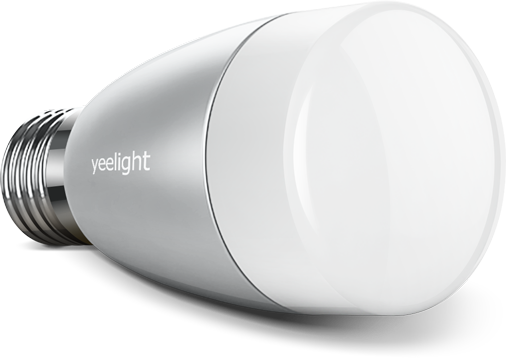
Xiaomi YEELIGHT smart bulbs can convert 16 million colors. It uses high-quality imported lamp beads, with high brightness and high color rendering index, which can make the white light lighting effect more soft and even, and the color performance is more abundant, bringing you a pure and comfortable daily lighting experience.
Purchase link: https://www.mi.com/yeelight/
Common types of illumination angles for light bulbs are small angle illumination and large angle illumination.
Common types of illumination angles used for light bulbs are small angle illumination and large angle illumination.
Small-angle illumination bulbs are commonly spotlight bulbs, small-angle illumination bulbs are often used to illuminate small areas such as artwork, corridor corners, and so on.
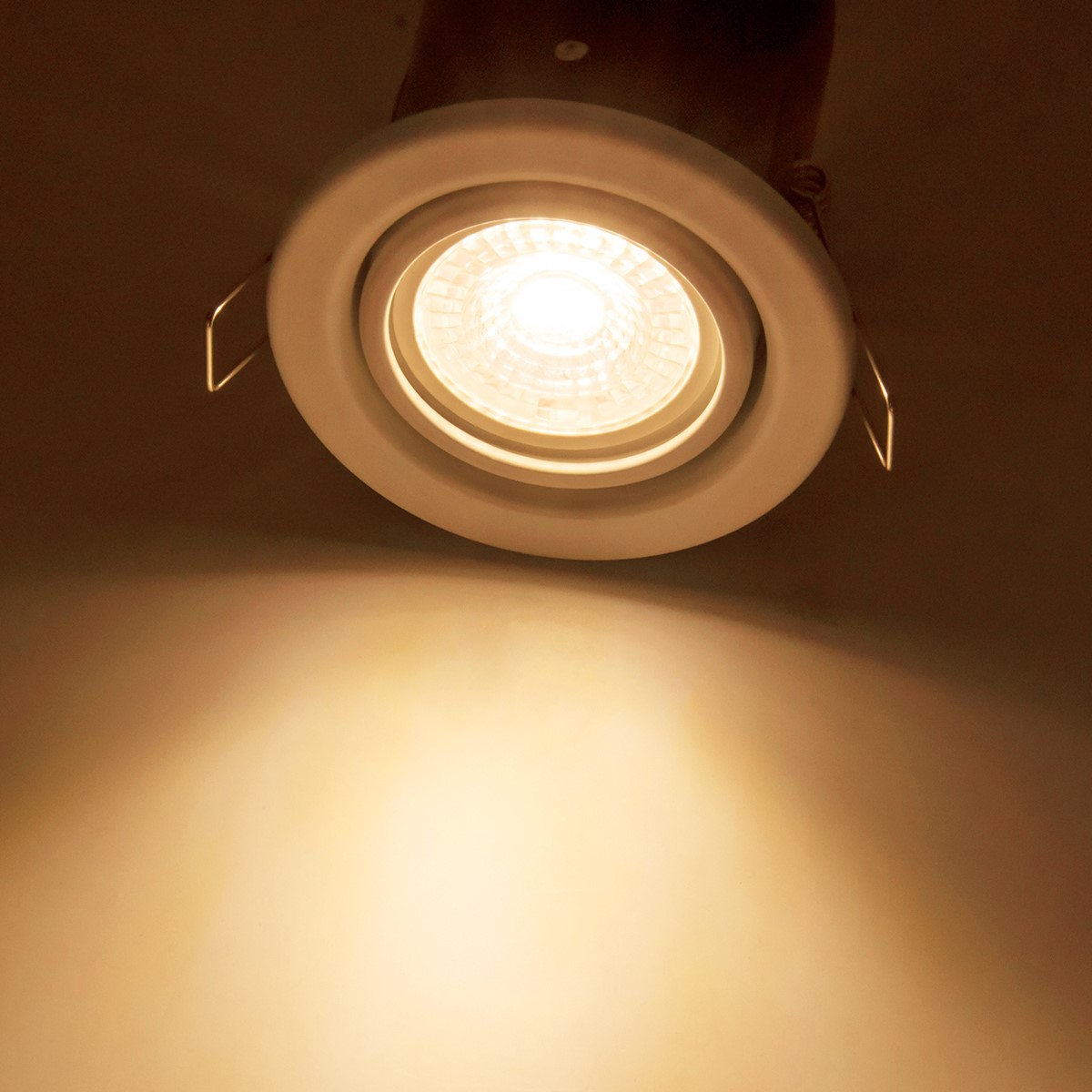
Large angle illumination bulbs are commonly spherical bulbs. Many spherical bulb can achieve 360 degree illumination. The overall brightness is higher and the illumination is more uniform, suitable for large area lighting.
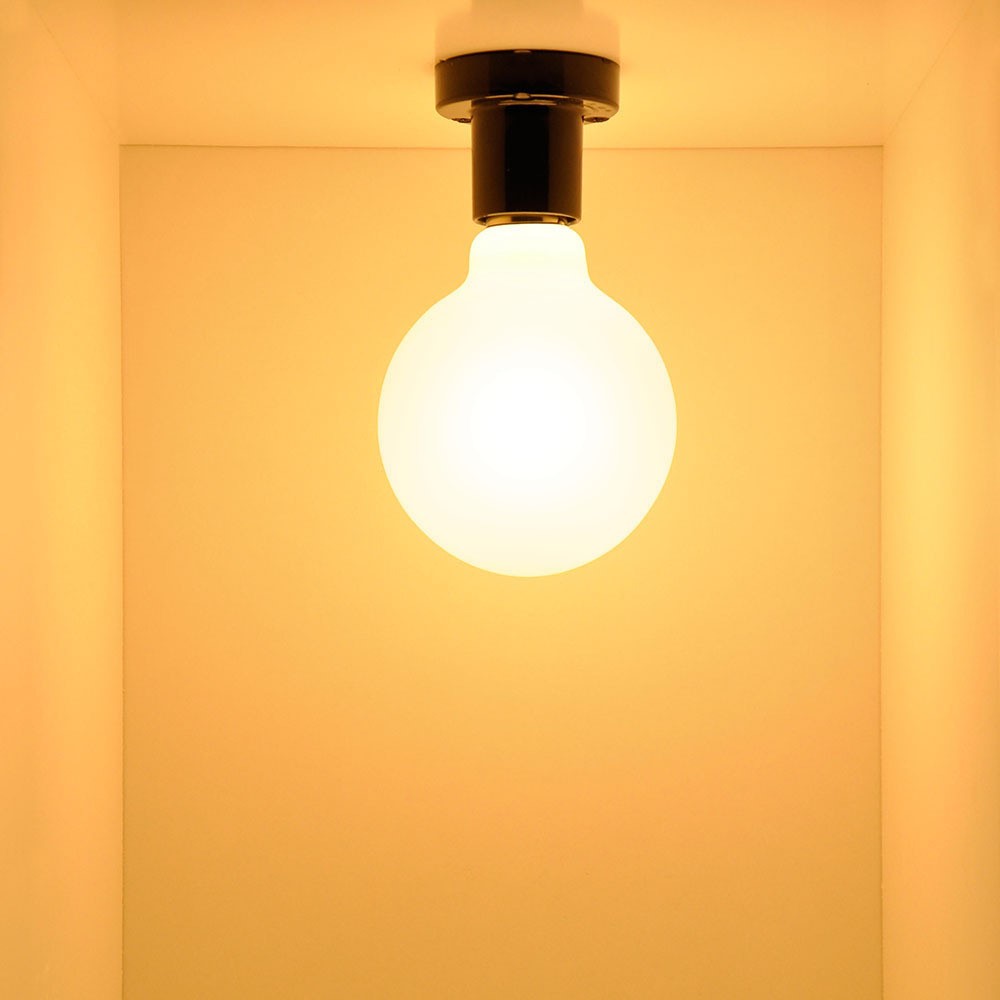
The bulb wattage is usually expressed in watts (W), which is the power.
When the wattage is larger, the bulb brightness is greater. Of course, when the wattage is larger, the electricity bill tends to increase.
You can purchase the bulb according to the actual demand, according to the square of your space, the height of the building, the brightness you want.
Color temperature, as the name suggests, is the temperature of the color. There is no best color temperature, different color temperature giving people different feelings, so there are different choices.
The color temperature indicators at each stage are as follows:
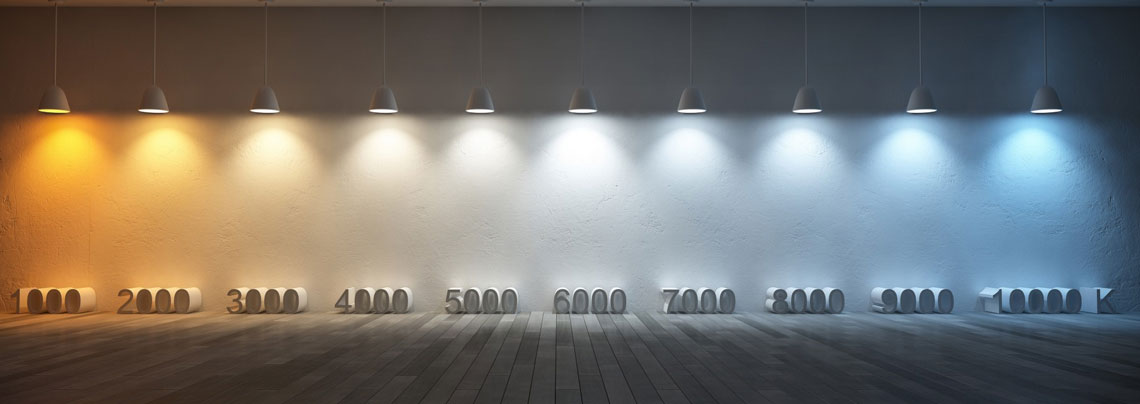
When you buy, it is recommended to choose according to the needs.
Warm color generally refers to the bulb with a color temperature of about 3000K.
It is generally used in the home environment and is suitable for rest places such as bedrooms, giving people a comfortable and warm feeling.
Cool color generally refers to the bulb with a color temperature of 5,000 or more, generally used in commercial environments, such as office space, giving people a clear, bright feeling. Among them, the color temperature of 5000K is more commonly used. Although it is a cool color, it will not cause irritation and fatigue to the eyes. If the color temperature reaches 6000K, it will feel too cold and will be more bluish.
Neutral light generally refers to the bulb with a color temperature of about 4000K, the color temperature is moderate.
Energy efficiency refers to the ratio of the amount of energy used to the amount of energy consumed. Increasing energy efficiency can often reduce energy losses and reduce greenhouse gas emissions by adopting more efficient technologies or production processes or through generally accepted application methods.
Whether the equipment is energy efficient can be measured by the energy efficiency rating.
If the device lasts longer or better than the traditional version of the same device, but the energy consumption is the same, the device is more energy efficient. Or it provides the same performance as the traditional version, it also consumes less energy.
Ultimately, energy efficiency means doing more with less.
For example, an old-fashioned, less efficient bulb that produces light, but wastes a lot of heat in the process. LED lights produce the same amount of light without generating waste heat, and they use less energy.
When choosing a lamp, we recommend choosing a product with a higher energy efficiency rating. See the energy level in the figure.
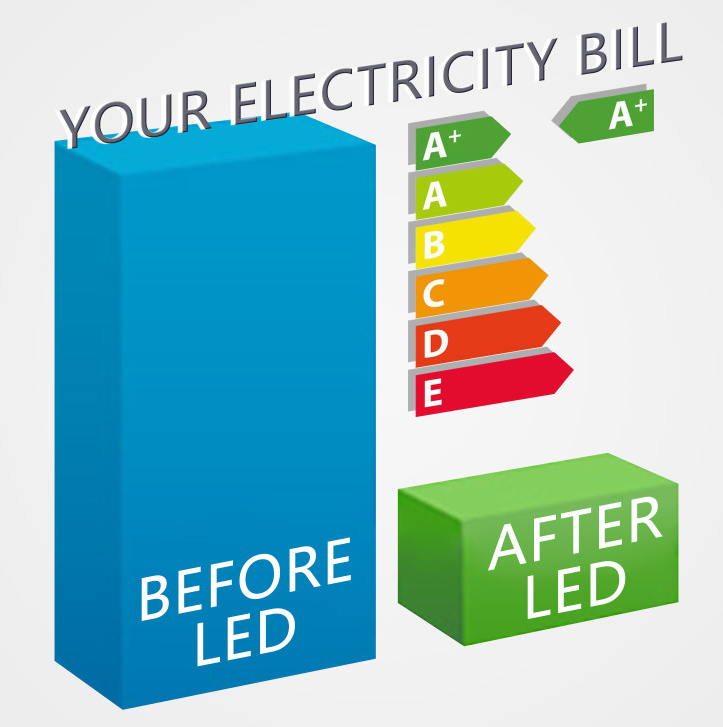
Class A is the most energy efficient, and Class G is the least energy efficient.
We usually use wattage to measure the brightness of the bulb. However, the wattage only represents the energy consumed by the bulb, and the brightness emitted by the bulb is represented by the luminous flux.
The luminous flux, the sign is Φ, is an indicator indicating the overall brightness of the light source, and refers to the light energy emitted by or absorbed by the light source per unit time.
Lumens (abbreviated as lm) are the units of luminous flux. For a light source, this number describes the total amount of light emitted by the source. Simply put, it is the amount of light. The higher the lumen, the greater the luminous flux of the source and the brighter the bulb.
If the power is the same, choose a higher value LED bulb.
For example, the same 6W LED bulb, of course, choose the 600 lm, not the 400lm.
The color rendering index refers to the color rendering ability of the light source to the object. We usually use sunlight as a reference, and its color rendering index is 100. The higher the color rendering index, the closer the color reproduction ability is to sunlight. When we look at other objects under this light source, we feel that the color is natural.
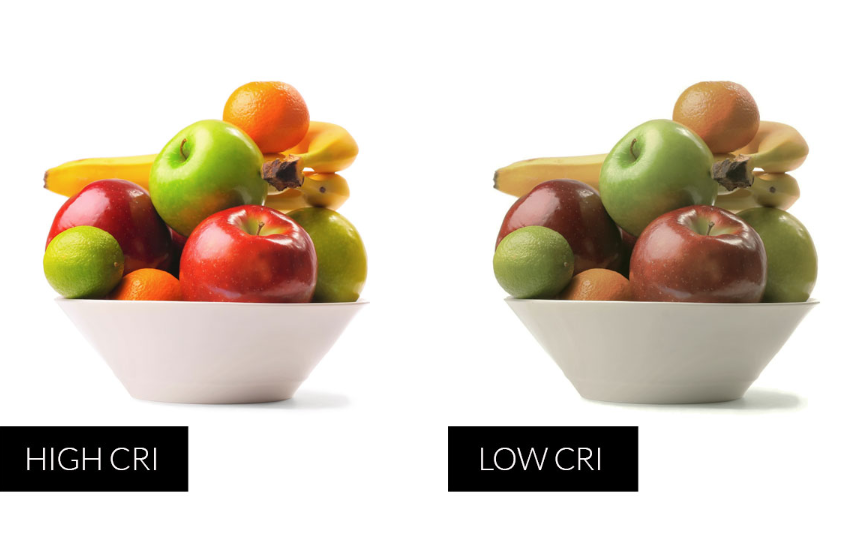
For indoor lighting, LED bulbs with a CRI of over 80 are recommended.
In clothing store lighting, fruit shop lighting, it is recommended to use CRI more than 90 LED bulbs, which helps highlight the bright colors of the product.
At the time of purchase, we recommend purchasing a bulb with a CRI of 80 or higher. A bulb with a lower CRI has a greater impact on the ability to recognize color. Especially if a child is learning under a low CRI bulb for a long time, vision is easily affected. The ability to distinguish colors will also decrease.
If you want a light bulb that is not dimmable, it will be a little cheaper than a dimmable light bulb, but it can't change its light depending on the environment.Dimmable light bulbscan be adapted to a variety of lighting needs, but compatibility issues between the dimmer and the dimmer need to be considered.
Dimming bulbs are mainly divided into step-less dimming and grading dimming, mainly used in dimming lamps.
During the step-less dimming process, the brightness transition is smooth and there is no preset brightness limit.

During the grading dimming process, the brightness transition is graded with a preset brightness limit.
(Remote dimming and Switch dimming)
The IP (INGRESS PROTECTION) protection level system was drafted by the IEC (International Electrotechnical Commission) to classify appliances based on their dust and moisture resistance characteristics. The IP protection level consists of two numbers.
The higher the number, the higher the level of protection.
The first number indicates the dust and electrical protection rating of the device, the highest level is 6. The second number indicates the moisture tightness of the device against moisture and water,the highest level is 8.
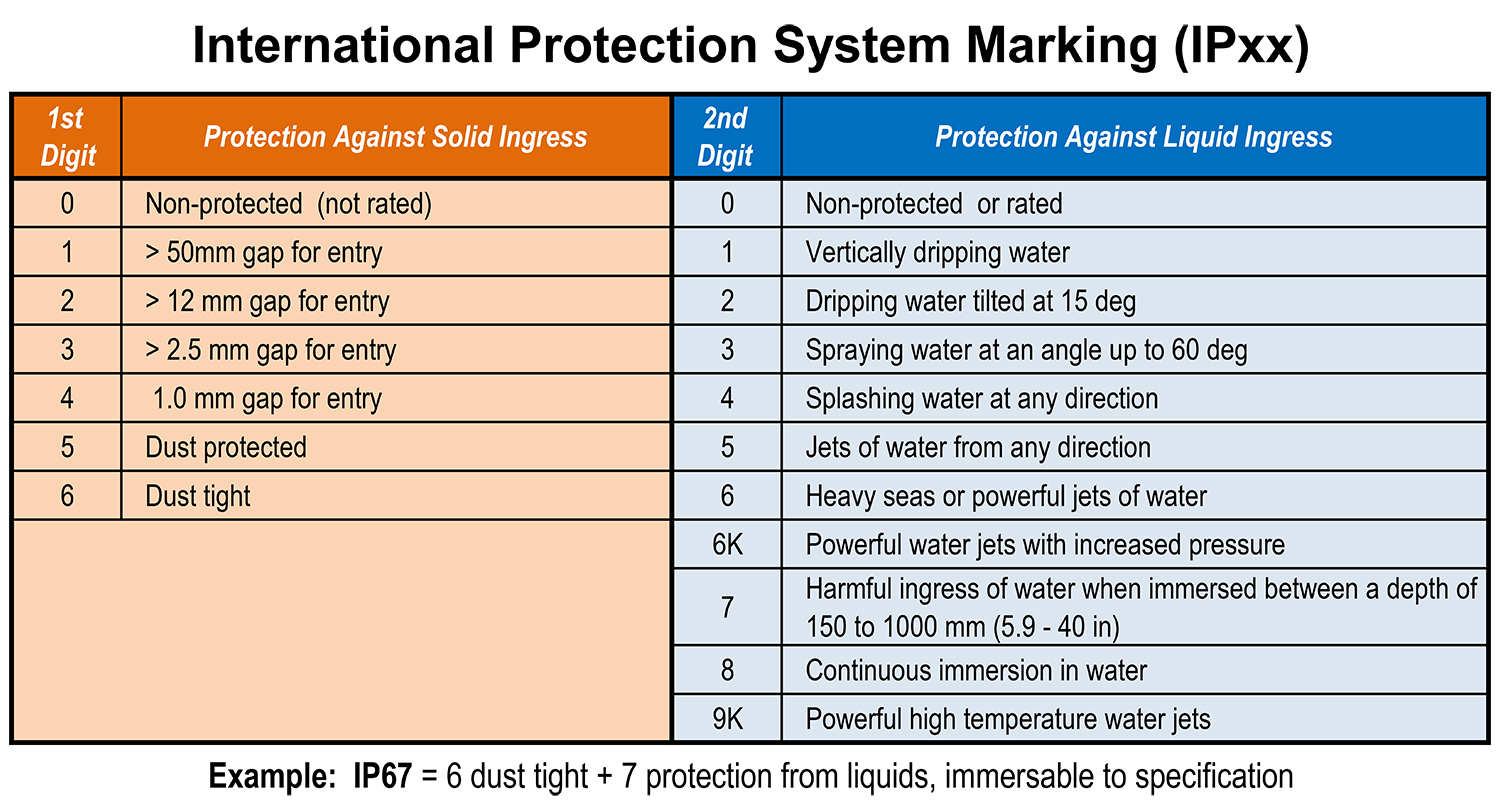
If you use the bulb in general indoors, there is not much fog or water vapor, then you can choose a lower waterproof rating LED bulb.
If the lamp needs to be used in a wet indoor area or outdoors, the water may fall or flow through the bulb or luminaire, and then select a higher waterproof rating LED bulb (outdoor light bulbs), otherwise, the bulb may be damaged.
There are too many light bulbs on the market, and the above 15 brainless tips maybe can answer a lot of your questions. I hope this article can help you easily choose the LED bulb that is right for you.
If you want to know more information about LED lighting, please contact withour product specialists.
CUSTOMER SERVICE
WHOLESALE INQUIRY
